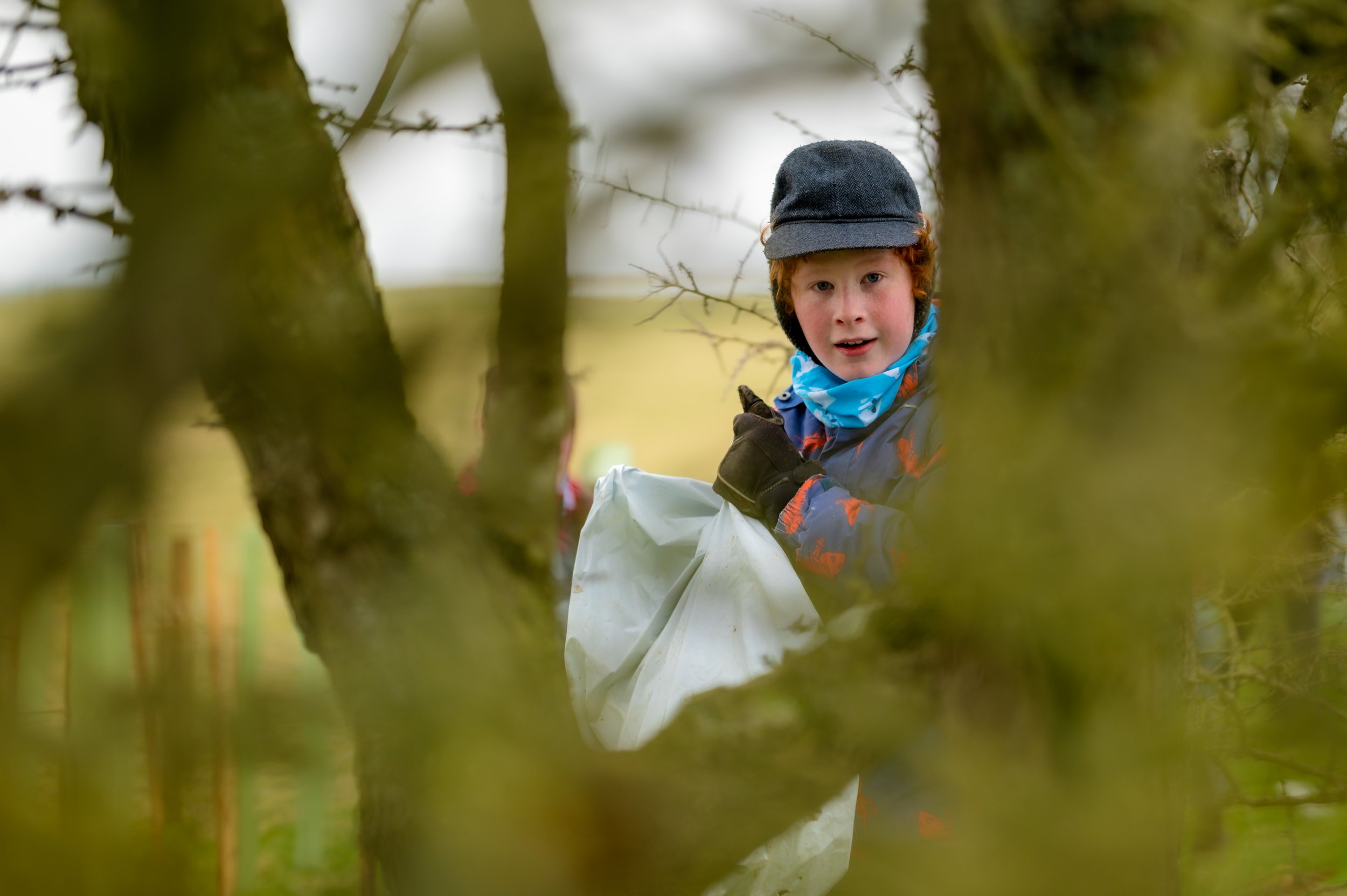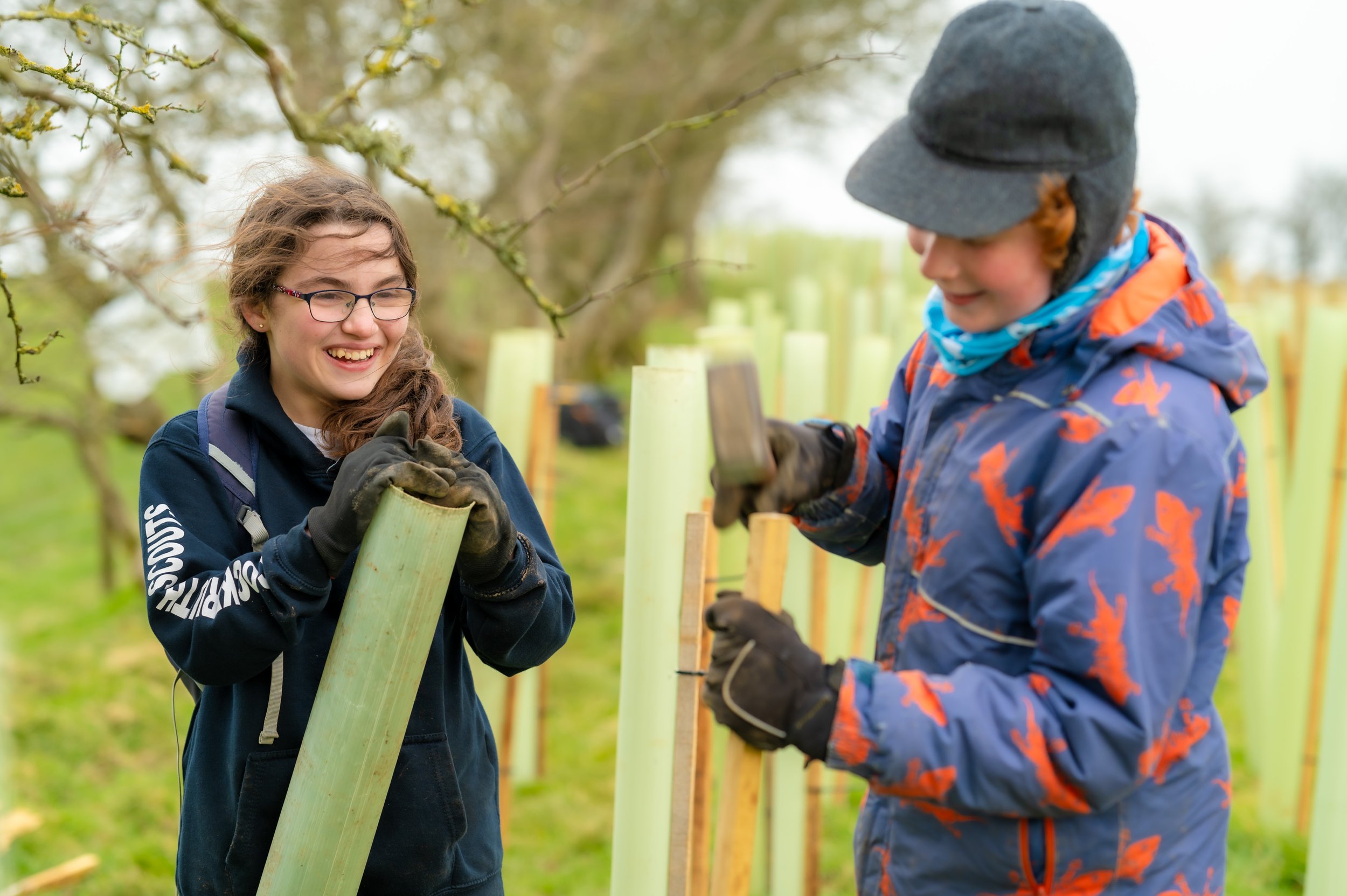Pardshaw

DATE:
2023 / 2024
LOCATION:
Pardshaw, near Cockermouth, Cumbria
PARTNERS:
Cockermouth Climate Action Now
University of Cumbria
Case studies >> Pardshaw
Retaining traditional methods on a working upland sheep farm
Aims
Increased biodiversity through the creation of a range of habitat types across the landholding.
Increased shelter for livestock, allowing for greater farm resilience from climate change.
Smaller field parcels to better manage flock in line with landowners farming style.
On-site opportunities for engagement with local communities in education and climate action activities.
Pardshaw Hall is a traditional working upland sheep farm. The landowner was keen to plant more hedgerows and trees to diversify their land and, in doing so, create more shelter for their livestock, and more habitat for biodiversity. This has been achieved through shelterbelt woodlands on the Western side of the farm to protect against prevailing winds, whilst reinstating historic hedgerows and field trees will expand the benefits across the wider farm holding.
The project has been delivered in part by local volunteers including climate action and Scouts groups, and in part by local contractors.
Additional engagement on site has been achieved through hosting University of Cumbria Forestry and Woodland Ecology students who have been exploring how trees, biodiversity, and productive farming can co-exist in a Cumbrian setting.
The landowner approached Cumbria Woodlands for advice regarding some trees on their land and were referred to Raise as a potential source of funding for the works that they were interested in carrying out. Our woodland creation advisor met with the landowner to understand the needs and expectations of the famer, offering expertise, guidance and assistance with funding in order to bring her vision to reality.
The scheme has been devised with various opportunities for community engagement and learning in both climate activism and further education. Local community climate action groups have undertaken the planting of woodland shelterbelts, alongside a local Scout group. There have also been several visits from university forestry and ecology students who have explored the site to learn from the landowner’s experiences in farming with nature. Through these engagement opportunities, individuals and groups have been able to support local biodiversity and climate mitigation, as well as expand their skills and knowledge of how farmers and forestry can work together to deliver what’s best for the land, the flock, and the farmer.
The scheme delivers several environmental and economic benefits including increasing the opportunities for healthy ecosystems across productive farmland, two objectives for land use often considered to be in conflict.
Employment was created through the appointment of a local fence contractor and hedge planter to deliver specific parts of the scheme. Additional interventions include erecting fences and gates to protect new planting and assist in livestock management. All aspects of the scheme combine to increase the resilience of the landowner’s farm business against climate change.
We have planted 4928 trees (equivalent of 1.83 hectares of woodland) across the 30-acre site. Tree types include sessile, oak, hazel, silver birch, rowan, wild cherry, hawthorn, blackthorn, dog rose, dogwood, elder, holly, crab apple and honeysuckle. The scheme incorporates the beat-up of unsuccessful planting to help establishment. Hedgerows will be laid in the future. This will improve stock-proofing of the hedgerow and increase its ecological value. It will also provide further opportunities for volunteer engagement in traditional management techniques
40
Volunteers
4928
Number of trees
1.83
Hectares of woodland planted
Project Impact
Contribution to Net Zero:
All trees planted will sequester carbon both in their structure and in the soils beneath.
Number of trees planted= 4928 (1.83 hectares of woodland).
Public access and community engagement:
Volunteer groups are involved in planting and maintenance days and university students have enjoyed access to the site on guided visits.
40 people have volunteered to plant trees on site and 16 have engaged with the site as part of furthering their formal studies and education.
Health and Wellbeing:
Future opportunities for volunteers to engage in nature-based activities on site including further tree-planting, beat-up and hedge laying.
Education and skills:
Educational opportunities for Higher Education Forestry students to develop understanding of nature-friendly farming practices and integration of trees in a productive landscape.
16 students attended site from the local university which hosts the National School of Forestry.
3 contractors have also been employed to work on aspects of site delivery.
Nature and Biodiversity:
Diverse planting mixture and styles of planting provides many ecological niches to support a range of wildlife on site.
14 species of trees and shrubs have been planted to provide sources of pollen and fruits for wildlife at different times of year, as well as providing shelter and refuge.




